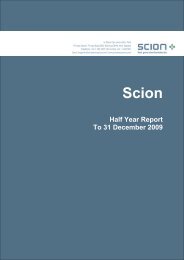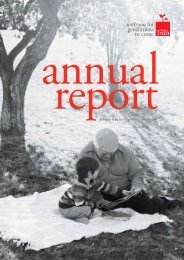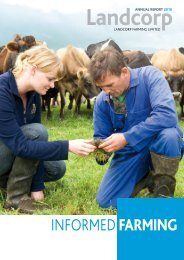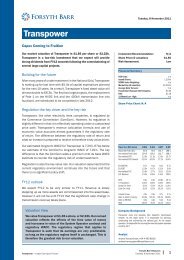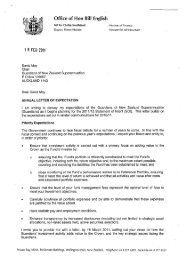apr-11.pdf (2.07 MB) - Crown Ownership Monitoring Unit
apr-11.pdf (2.07 MB) - Crown Ownership Monitoring Unit
apr-11.pdf (2.07 MB) - Crown Ownership Monitoring Unit
You also want an ePaper? Increase the reach of your titles
YUMPU automatically turns print PDFs into web optimized ePapers that Google loves.
topic on CFI risk tolerance (page 44) takes a closer look at the risk levels CFIs haveadopted within their investing strategies.Commercial priority companiesThe 2010 APR discussed the need for companies within the commercial priorityportfolio to translate a period of high investment into stronger profits and pay moredividends. The commercial priority portfolio section (page 18) notes some improvementin profitability and dividends, and higher gearing in 2010/11. This remains an areaof COMU focus, however, as the Government continues to target an early return tosurplus, release capital for reallocation to higher priority areas and maximise the valueof all commercial assets through performance improvements.To create value for the <strong>Crown</strong>, commercial priority companies must, over time, make areturn that covers the <strong>Crown</strong>’s cost of borrowing, plus a margin that reflects their businessrisk. We rely on a range of measures to assess companies’ returns against this objective:• Total shareholder return (TSR) is an important trend metric, but is reliant on robustcommercial valuations. This year we obtained independent commercial valuations(see special topic, page 26) of all commercial priority companies; the results provideconfidence that companies’ commercial valuation methodologies are maturing.• We took the additional step this year of commissioning an independent calculationof “economic profit” for a 10-year period across commercial priority companies.While measures of economic profit are stylised and carry a number of caveats, theyachieve a strong focus on whether companies are achieving their cost of capital. Thespecial topic on economic profit (page 31) indicates that, overall, the commercialpriority portfolio has returned its cost of capital.The section on individual commercial priority entities highlights the challenge thatentities such as Kordia, New Zealand Post (NZ Post) and Public Trust are facing inprofitably managing declines in core business areas whilst seeking to achieve earningsin new areas. There have also been standout performers; for example, MetService andAnimal Control Products have continued their consistent run of strong results.Board appointment activityThe primary direct influence shareholding Ministers have on performance isthe responsibility for Board appointments. This year saw a wide range of Boardmembership changes across the portfolio, including the appointment of 13 new chairs.This activity is detailed on page 48.Additional material available on websiteThe inaugural 2010 APR laid a strong foundation for understanding the portfolio ofgovernment enterprises monitored by COMU. As a second edition, the 2011 APR offersmore detailed insights into the performance of these enterprises, with the addition ofa number of special topics. The full reports commissioned on economic profit andindependent commercial valuations are available on COMU’s website. I encourage youto read these reports, which contain valuable information on company performance.Andrew TurnerActing Deputy Secretary, <strong>Crown</strong> <strong>Ownership</strong> <strong>Monitoring</strong> <strong>Unit</strong>page | 5



